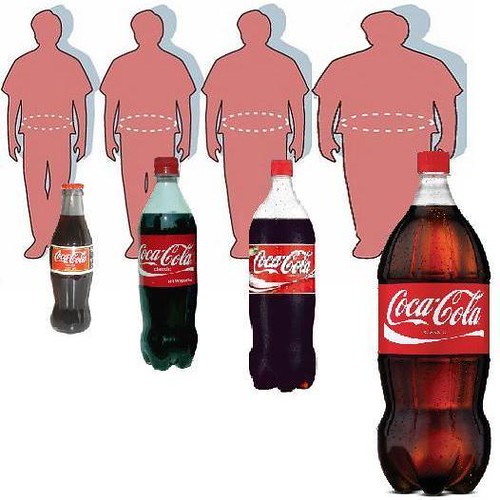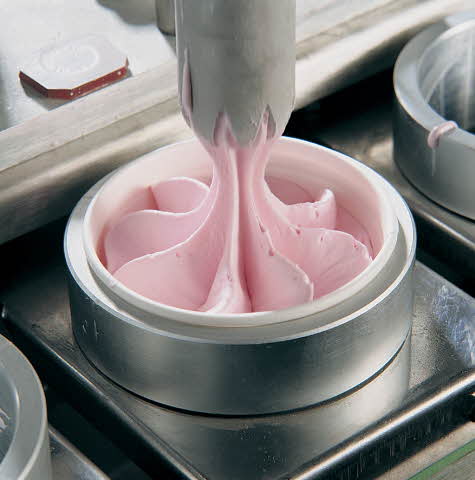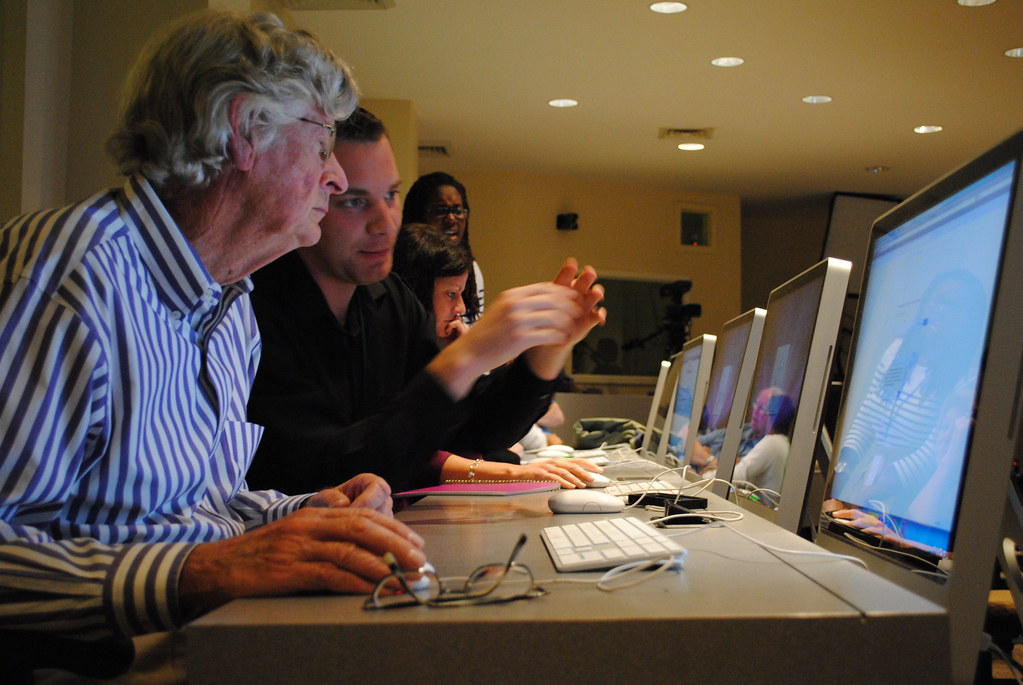
Turning 50 is a remarkable milestone, bringing with it a wealth of wisdom, experience, and indeed, a natural evolution in our bodies. As the National Institute on Aging highlights, significant shifts like menopause, typically occurring between 45 and 55, profoundly influence our hormones, bone health, and metabolism. This makes the period after 50 an opportune moment, not for limitation, but for a thoughtful reassessment of our daily habits, paving the way for sustained well-being.
It’s true that embracing new, health-affirming routines is essential, but equally powerful is the conscious decision to release practices that no longer serve us. This isn’t about imposing harsh restrictions; rather, it’s about making astute, informed choices that cultivate a healthier, more vibrant existence. For women over 50, a mindful approach to diet and lifestyle is paramount, especially when considering the increased risk of conditions such as diabetes, obesity, heart attacks, and strokes, which scientific evidence suggests become more prevalent with age if we don’t actively nourish our bodies.
Ultimately, life beyond 50 is an exciting chapter, an invitation to shed outdated habits, release unnecessary anxieties, and step fully into a place of confidence, comfort, and profound joy. We can view this as an invigorating ‘spring cleaning’ for our entire being – consciously letting go of what drains us and wholeheartedly embracing what empowers us. This journey of thoughtful adaptation ensures our prime years are not just lived, but truly flourished, free from the burdens of unhelpful routines and embracing a path of sustained vitality.

1. **High-Impact, High-Risk Workouts**The exhilarating, joint-jarring workouts that once felt invigorating in our younger years may no longer align with our body’s evolving needs as we mature. As women cross the significant threshold of 50, our physiology undergoes a natural transformation, necessitating a more nuanced and attentive approach to our physical activity. The boundless energy and inherent resilience of youth gradually give way to a heightened awareness of our joints and bone health, which now require careful consideration and gentler engagement.
One of the primary reasons for this adjustment stems from the natural decline in estrogen levels post-50, a change that can lead to reduced bone density and an increased susceptibility to fractures. The Centers for Disease Control and Prevention (CDC) underscores this reality, noting that a concerning one in four older adults reports a fall each year. Consequently, continuing with high-impact exercises without careful modification can inadvertently elevate this risk, making a mindful pivot in our fitness regimen a crucial act of self-care and preservation.
This isn’t to suggest that physical activity should diminish; quite the contrary. Instead, it’s an empowering call to action – to embrace forms of exercise that nurture our changing physiology. PubMed, a respected resource for medical research, strongly advocates for weight-bearing, low-impact activities. Think brisk walking, the flowing movements of yoga, or the graceful practice of tai chi, all of which are excellent for maintaining bone strength and significantly improving balance without putting undue stress on vulnerable areas like our hips, knees, and ankles.
By consciously shifting towards these supportive modalities, we achieve a dual benefit. Not only do we proactively mitigate the risk of injury and discomfort, but we also actively cultivate a sustainable, enjoyable path to fitness that profoundly supports our body’s long-term health and mobility. This thoughtful adaptation ensures we remain active, agile, and robust, empowering us to engage fully with life’s adventures while safeguarding our precious physical well-being for years to come.

2. **Sugary Beverages**Consciously reducing or eliminating daily soda or sweetened iced tea, while perhaps challenging initially, yields substantial benefits for women over 50. These seemingly innocuous liquid calories often subtly infiltrate our diets, offering negligible nutritional value while concurrently escalating health risks that become more pronounced as we mature. It’s a deeply ingrained habit for many, often carried over from earlier decades, yet one that unequivocally warrants a thorough re-evaluation as we prioritize our health and vitality in this stage of life.
The United States Department of Agriculture (USDA) explicitly advises limiting added sugars, emphasizing that sugary drinks contribute to excessive empty calories and can lead to unwanted weight gain, particularly around the midsection after menopause. This accumulation of abdominal fat is not merely an aesthetic concern but a recognized health risk. Furthermore, extensive research cited by PubMed establishes a clear link between high consumption of sugar-sweetened beverages and an elevated risk of type 2 diabetes, a condition whose prevalence significantly increases for women with age.
The cumulative effect of these sugary indulgences extends beyond immediate caloric intake; they can trigger inflammation and contribute to the development of nonalcoholic fatty liver disease, as a 2023 University of Missouri study found a link between Western diets high in fat and sugar and this condition. Another 2023 study from the University of Pittsburgh suggested that excess sugar may aggravate inflammatory bowel disease. These insights underscore the systemic impact of sugar on our internal health and cognitive function, making moderation a powerful health strategy.
Making the simple yet impactful switch to healthier beverage alternatives can profoundly bolster our overall wellness. Opting for refreshing water, perhaps infused with fruit, unsweetened herbal teas, or sparkling water with a hint of natural flavor, can make a transformative difference. This seemingly minor dietary adjustment can unlock significant improvements in sustained energy levels, optimal hydration, and a substantially reduced risk of developing chronic health conditions, empowering us to experience our best health every single day.
Read more about: Seriously, Where Did They Go? A Nostalgic Deep Dive into 12 Discontinued Drinks That Vanished From Our Tables
3. **Skipping Regular Check-Ups**It’s a common and understandable inclination to bypass routine doctor’s appointments when we generally feel well, especially given the demands of our busy lives. We often fall into the trap of assuming that an absence of immediate, noticeable symptoms equates to an absence of any underlying health concerns. However, for women navigating life after 50, this assumption can transform into a precarious gamble, as our bodies undergo subtle yet significant changes that require a proactive health strategy.
The reality is that as we age, the inherent risks for a spectrum of health conditions naturally escalate, making consistent, preventive healthcare an absolutely paramount practice. Regular check-ups are not merely administrative tasks; they are incredibly important opportunities for early detection. They allow medical professionals to identify potential issues at their nascent stages, when they are typically far easier to manage, treat, and often, have a much higher chance of being fully cured.
Delaying appointments until symptoms manifest is a reactive approach that can inadvertently lead to more complex and challenging health scenarios. The core message is clear: “Don’t wait for symptoms to show up before you make that appointment because regular screenings can literally be lifesavers.” This proactive engagement is a powerful step, allowing us to seize control of our health narrative, addressing potential concerns long before they escalate into serious or debilitating problems.
Maintaining a diligent schedule of recommended screenings for vital indicators such as blood pressure, cholesterol levels, and bone density is foundational to this proactive health management. These screenings are not just about problem-solving; they establish an ongoing dialogue with healthcare experts who can offer personalized guidance and support for optimizing our well-being. Embracing regular medical evaluations is a cornerstone of a healthy, vibrant, and empowered life beyond 50, affording us invaluable peace of mind and the potent advantage of early intervention.
Read more about: Is Your Electric Bill Giving You Nightmares? 14 Epic Ways to Slash Your Costs, Starting Today!

4. **Skimping on Sleep**The pressures of modern life, characterized by packed schedules and myriad responsibilities, frequently nudge us toward late nights and early mornings, relegating adequate sleep to a secondary concern. In our younger years, there might have been a certain pride associated with functioning effectively on minimal rest, a testament to our youthful endurance. However, for women over 50, consistently clocking in fewer than seven hours of sleep per night exacts a considerable and detrimental toll, impacting our well-being in ways that extend far beyond simple tiredness.
The Centers for Disease Control and Prevention (CDC) provides clear guidelines, recommending that adults aim for a consistent 7-9 hours of quality sleep each night. This recommendation becomes even more critical for women past 50, as natural hormonal shifts during this period can inherently disrupt established sleep patterns, making the deliberate prioritization of rest absolutely essential. Chronic sleep deprivation, a pervasive issue, unfortunately, extends its reach to affect crucial aspects of our health, including cognitive function, emotional stability, and the robustness of our immune response.
Moreover, the intricate dance of hormones responsible for regulating appetite is significantly disturbed by insufficient sleep, which can inadvertently lead to unwanted weight gain. This creates a challenging cycle, where lack of sleep contributes to weight management difficulties, further compounding the health considerations that become more prominent with age. The impact of fragmented or insufficient sleep is truly systemic, affecting nearly every facet of our physical and mental health, underscoring its pivotal role in our overall vitality.
To reclaim the profound benefits of truly restorative sleep, cultivating a calming bedtime routine is a highly effective strategy. This ritual signals to your body and mind that it’s time to transition into a state of rest and relaxation. Simple practices such as reading a physical book, indulging in a warm bath, engaging in gentle stretching, or even a few moments of quiet reflection can profoundly aid in winding down. Prioritizing sleep isn’t a mere indulgence; it’s a fundamental pillar of health that profoundly rejuvenates us, enabling us to greet each new day with renewed vitality, mental clarity, and an unwavering sense of well-being, which is undeniably crucial for thriving in this golden stage of life.
Read more about: Busted! 15 Sleep Myths You’ve Probably Believed Your Whole Life (And Why You Should Stop NOW!)

5. **Overloading on Processed Foods**The undeniable allure of convenience often steers our dietary choices, and in our increasingly fast-paced world, packaged snacks and ready-to-eat frozen meals have, for many, regrettably become dietary mainstays. While the quick fix they offer can be tempting, a diet heavily reliant on processed foods proves to be profoundly detrimental, especially as our bodies undergo the natural metabolic and physiological shifts that come with age. What might have been an occasional, easily metabolized indulgence in earlier decades can escalate into a significant health hazard after 50, necessitating a deliberate and conscious re-evaluation of our culinary habits.
These highly processed items are, by their very nature, frequently laden with excessive sodium, unhealthy trans and saturated fats, and a cocktail of artificial preservatives. The Food and Drug Administration (FDA) unequivocally highlights that elevated sodium intake is a direct contributor to high blood pressure, which stands as a primary risk factor for heart disease and stroke – both of which are unfortunately leading health concerns for older women. The long-term, consistent consumption of ultraprocessed foods has also been grimly associated with a significantly higher risk of death from any cause and a disturbing 9 percent higher risk of neurodegenerative deaths, as revealed in recent, extensive analyses of data from over 100,000 American health professionals.
Furthermore, the detrimental effects of processed foods extend to our gut health and inflammatory responses. A 2023 University of Missouri study linked Western diets, which are typically high in fat and sugar often found in processed foods, to the development of nonalcoholic fatty liver disease, a precursor to chronic liver conditions. The pervasive presence of refined carbohydrates, another hallmark of processed items, also spikes blood sugar and leads to an overproduction of insulin, increasing the risk of developing adult-onset diabetes and even being linked to higher instances of depression, as research indicates.
Conversely, a diet thoughtfully centered on whole, minimally processed foods—think vibrant fruits, fresh vegetables, lean proteins, and wholesome whole grains—provides the precise array of essential nutrients your body craves. This approach holistically supports everything from robust heart health to the crucial task of maintaining a healthy weight, an aspect that becomes increasingly vital as your metabolism naturally decelerates with age. Embracing fresh, unprocessed ingredients allows us to expertly steer clear of inflammatory sugars, harmful additives, and excessive sodium, ensuring our meals are not just satisfying but profoundly nourishing, empowering our bodies to thrive with sustained energy and optimal function.
Read more about: The Protein Paradox: Balancing Benefits and Risks of High-Protein Intake

6. **Ignoring Strength Training**It’s a prevalent trend among many women to concentrate their fitness efforts predominantly on cardiovascular exercises, often motivated by weight management goals or a desire for heart health. While the innumerable benefits of cardio are beyond dispute, consciously overlooking strength training means inadvertently missing out on a suite of essential advantages that become even more profoundly critical as we advance in years. This common oversight, if unaddressed, can carry significant implications for our physical robustness, metabolic rate, and overall long-term health trajectory.
A fundamental physiological reality of aging is the natural, progressive loss of muscle mass, a condition scientifically termed sarcopenia. Harvard Health reports that this process, often beginning as early as our 30s, regrettably accelerates quite distinctly after the age of 50. This gradual and often unnoticed decline in muscle mass doesn’t just reduce our physical strength; it also significantly slows our metabolism and diminishes our stability, consequently elevating the risk of falls and rendering everyday movements and tasks increasingly challenging. Dr. Amit Shah from the Mayo Clinic emphasizes that with aging, “your body composition changes… You literally become more fat and less water,” highlighting how crucial nutrition and muscle maintenance become.
The absence of sufficient muscle tissue has a cascading effect, impacting our body’s ability to efficiently burn calories and maintain a healthy body composition. It compromises our structural integrity, meaning our bones lack the necessary muscular support, further increasing the risk of injury. Moreover, the decline in muscle fiber can directly lead to frailty, impacting independence and quality of life. This makes strength training not just an option, but a vital component of a comprehensive health strategy for women over 50, a true investment in our future mobility and energy.
The empowering news is that engaging in consistent strength training, even just twice a week, serves as a powerful antidote to this age-related decline. There’s no requirement to transform into a bodybuilder; effective resistance can be found in simple tools like resistance bands, light free weights, or even the ingenious use of our own body weight. Such practices are instrumental not only in building and preserving vital muscle mass but also in bolstering bone density and significantly boosting our metabolic rate. This proactive engagement transcends mere fitness; it fortifies our bodies, supports our skeletal system, and ignites our metabolism, transforming age-related challenges into vibrant opportunities for sustained vitality, independence, and a truly fulfilling, active life.
Read more about: 13 Essential Steps for Maximizing Your Home Sale Price: A Comprehensive Guide for Sellers

7. **Tanning and Sun Exposure Without Protection**While a sun-kissed glow might have been appealing in younger years, prolonged, unprotected sun exposure becomes a significant health concern as we mature. For women over 50, this habit accelerates visible skin aging and dramatically increases the risk of skin cancer, a risk that grows with cumulative exposure. Understanding this cumulative impact is crucial for a mindful approach to sun safety, an essential part of your overall well-being strategy in your prime years.
The Skin Cancer Foundation reports that over 90% of visible skin aging changes are caused by the sun’s powerful UV rays. These include deeper wrinkles, fine lines, and age spots, all exacerbated by consistent UV damage. The empowering news, however, is that it’s never too late to begin protecting your skin effectively and mitigating further damage, turning this awareness into positive, proactive self-care.
Making comprehensive sun protection a non-negotiable part of your daily routine is one of the most effective strategies for vibrant skin health. Consistently apply a broad-spectrum sunscreen with an SPF of 30 or higher every single day, regardless of weather. This creates a vital barrier against harmful UV rays, offering crucial defense and contributing significantly to preserving your skin’s vitality and overall health for many years. It’s a small act with immense, lasting benefits.
Read more about: Ditch the Drama: Your Guide to 12 Bikini Blunders and How to Slay Your Summer Style

8. **Eating Large, Heavy Meals Before Bed**Indulging in large, hearty dinners too close to bedtime can profoundly interfere with achieving restorative sleep. As our bodies mature past 50, digestive systems often become less efficient, requiring more effort to process food late into the evening. This increased workload leads to uncomfortable issues like bloating, indigestion, heartburn, and acid reflux, which tend to become more prevalent with age.
These aren’t minor annoyances; they severely disrupt sleep cycles, preventing you from falling asleep easily or causing awakenings, leaving you fatigued. Lying down after a substantial meal exacerbates these challenges, making it easier for stomach acid to travel into the esophagus. This creates burning sensations and can lead to chronic digestive problems, undermining both digestive health and precious sleep quality.
To support optimal digestion and ensure peaceful sleep, the National Institute on Diabetes and Digestive and Kidney Diseases (NIDDK) advises eating smaller, more frequent meals. Crucially, aim for your last major meal at least three hours before sleep. This intentional gap allows ample time for digestion, significantly reducing nocturnal discomfort and paving the way for the deep, uninterrupted sleep essential for your overall well-being and daily vitality.
Read more about: Beyond the Sound Barrier: An Exclusive Look Inside Concorde’s Legendary Luxury and Engineering Marvels

9. **Forgetting About Your Pelvic Floor**The pelvic floor, an often-overlooked yet vital group of muscles, crucially supports the bladder, bowel, and uterus. Despite its importance in maintaining continence and core stability, many women only consider it when problems arise. Understanding and nurturing this intricate muscular sling is essential as women age, as it directly impacts mobility and daily comfort.
This essential network controls continence and contributes significantly to core strength. However, childbirth and hormonal changes during menopause can profoundly weaken these muscles. This weakening leads to challenging issues like urinary incontinence, which can diminish quality of life and confidence. Many women suffer silently, unaware that effective solutions exist.
The empowering news is that, like any other muscle, the pelvic floor can be strengthened. Regularly performing Kegel exercises is a powerful, discreet, and accessible method to improve strength and function. Consistent, correct practice can significantly help prevent or reduce incontinence symptoms, enhance physical comfort, and restore confidence and control. It’s a small investment yielding immense, life-changing benefits for long-term well-being and independence.

10. **Staying Dehydrated**Overlooking sufficient water intake is easy, but for women over 50, chronic dehydration causes widespread health issues. These range from persistent fatigue and headaches to more serious confusion, profoundly impacting overall quality of life. As we age, our body’s ability to conserve water and our sense of thirst naturally diminish, making subtle dehydration alarmingly common.
This decreased thirst sensitivity means that by the time you feel thirsty, your body may already be mildly dehydrated. This insidious process affects energy, digestion, cognitive clarity, and skin health, hindering daily tasks and life enjoyment. Understanding this age-related shift is crucial for proactive self-care.
The National Academies of Sciences, Engineering, and Medicine recommend women consume approximately 2.7 liters of total fluids daily, from both beverages and food. Keeping a water bottle visible and within reach is a practical strategy, serving as a constant reminder to sip regularly. Optimal hydration supports sustained energy, healthy skin, and peak bodily function, empowering you to feel your best every day.
Read more about: Beyond the Hype: 13 Intermittent Fasting Side Effects You *Really* Need to Know Before You Start!

11. **Isolating Yourself**In busy lives, friendships and social activities can inadvertently fade. However, for women over 50, maintaining robust social connections is not just pleasant; it’s a vital component of holistic mental, emotional, and physical health. The innate human need for connection remains essential, and neglecting it can have far-reaching negative consequences for overall well-being.
The Centers for Disease Control and Prevention (CDC) links social isolation and loneliness to higher risks for various serious conditions, including high blood pressure, heart disease, depression, and cognitive decline. This research underscores how profoundly social interactions contribute to our physiological and psychological resilience.
Making a deliberate effort to nurture these connections is an empowering act of self-care. This involves setting aside time for friends, joining a club, volunteering, or taking a class. These interactions provide invaluable emotional support, a comforting sense of belonging, and opportunities for shared experiences, proving as critical to your well-being as diet and exercise. Embracing social engagement enriches your life and fortifies your health, ensuring your prime years are filled with meaning and connection.
Read more about: Master Your Commute: 12 Life-Changing Strategies to Slash Stress and Boost Your Well-being Every Day

12. **Worrying About “Age-Appropriate” Anything**Reaching 50 is an empowering moment to shed outdated notions about “age-appropriate” behavior. In younger years, we might internalize rigid rules—no miniskirts, no loud laughter, no bold lipstick—but this vibrant stage grants wisdom to discard such limitations. This isn’t clinging to youth, but embracing liberation from deep selnowledge and confidence.
The concept of “age-appropriate” often acts as an invisible barrier, preventing women from authentic self-expression and enjoying activities or styles that bring joy. By now, you know better than to let external pressures dictate choices. This is an invitation to redefine being over 50, living courageously according to what feels right and true to your innermost self, rather than conforming to tired norms.
If a vibrant color makes you feel alive, or an adventurous hobby sparks your spirit, it is unequivocally appropriate. Your experience, comfort, and happiness are the ultimate arbiters. Embracing this freedom means stepping fully into your prime, confident in your choices, and celebrating your unique journey. Let go of conformity; allow your inner vitality and wisdom to radiate outwards, enriching this extraordinary chapter with laughter, grace, and genuine contentment.
Turning 50 isn’t about slowing down; it’s about a profound opportunity to level up, bringing newfound perspective and power. You’ve navigated decades, gathering wisdom, embracing joy, and demonstrating resilience. Now, embrace this rich tapestry of life by consciously shedding habits, hang-ups, or outdated rules that no longer serve your highest good. This isn’t loss, but liberation, allowing you to live more authentically and vibrantly. Every laugh line tells a story, every “no” honors boundaries, and every decision is powerfully guided by earned wisdom. So, with confidence, let go of what doesn’t matter, hold onto what makes you shine, and remember: this stage isn’t about chasing youth. It’s about confidently owning your prime with abundance, grace, and an exquisite glass of wine, savored fully.




